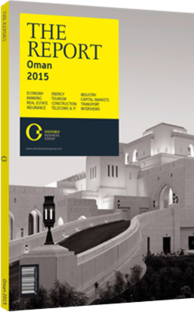AbdulRazak Ali Issa, CEO, Bank Muscat: Interview

Interview: AbdulRazak Ali Issa
What can the recent strong growth in the banking sector predominantly be attributed to?
ABDULRAZAH ALI ISSA: The banking and financial sector in Oman serves as a pillar of the national economy. Sound macroeconomic policies, a stable financial system and fine-tuned monetary policy measures have all supported the financial sector, which has in recent times witnessed considerable growth momentum and steps forward in technology use and transparency. The banking sector continues to record strong growth thanks to the government’s focus on economic diversification and infrastructure development across the sultanate, complemented by a stimulus fiscal and monetary policy. The positive growth trend is reflected in major accretion to deposits and strong growth in loans and advances. Total credit by the banking sector expanded by 9%, amounting to OR16.51bn ($42.75bn) in the first nine-month period of 2014 as compared to the same period in 2013. Total assets grew by 10% to OR24.6bn ($63.7bn) and total deposits also witnessed a rise of 10% to OR17.11bn ($44.3bn) in September 2014. As reflected in recent stress tests conducted by the Central Bank of Oman, the sector proved resilient to shocks, with comfortable capital levels. The banks enjoy sound capital buffers as internal capital generation is helping to match asset growth of 10-12%. Notwithstanding the volatile oil prices marginally impacting the overall economic outlook for 2014, the banking sector is expected to see a healthy performance, driven by a favourable operating environment and factors such as the government’s focus on ongoing infrastructure development projects.
What do you see as the emerging role of local banks in funding large infrastructure projects?
ISSA: Looking forward, the project pipeline in the country for this year alone is in excess of $6.5bn and well in excess of $25bn over the next five years. The Oman railway project and the development of the special economic zone in Duqm are only a few of the very-large-scale projects announced in the country. We believe that the local banks will continue to play a major role in these mega-projects, and will become more involved in the various stages of funding.
Infrastructure projects are the lifeblood of a nation. They have played a pivotal role in getting Oman to where it is today, unlocking the hydrocarbons wealth and powering economic diversification. The outlook for Oman’s economy in 2014 is positive, as the government has announced a 5% increase in spending. The banking sector is poised to post a strong performance owing to infrastructure development across the sultanate and the government’s continued focus on economic diversification. The 2014 investment expenditure is estimated at OR3.2bn ($8.29bn), which is 24% of the overall public expenditure.
How is customer sophistication changing the dynamics of the retail banking segment?
ISSA: The retail banking segment faces the challenge of offering the right mix of traditional and electronic banking channels for the sultanate’s youth-dominated demographic, as 60% of the population is aged 15-45 years. High-tech products and services are becoming increasingly important, including electronic payment and web-based services. This is all in tune with Oman moving towards a cashless society and meeting the banking requirements of a young and tech-savvy generation.
Increased competition in the retail segment is resulting in an increased focus on customer segmentation in the mass market. With large volumes of customers, banks are migrating customers from the more conventional branch channel to alternative channels, which puts strain on the technology needed to run mobile and online systems. It is for this reason that we are set to leverage on investments in new technology to further increase efficiency, improve customer service and support growth plans.
You have reached the limit of premium articles you can view for free.
Choose from the options below to purchase print or digital editions of our Reports. You can also purchase a website subscription giving you unlimited access to all of our Reports online for 12 months.
If you have already purchased this Report or have a website subscription, please login to continue.

